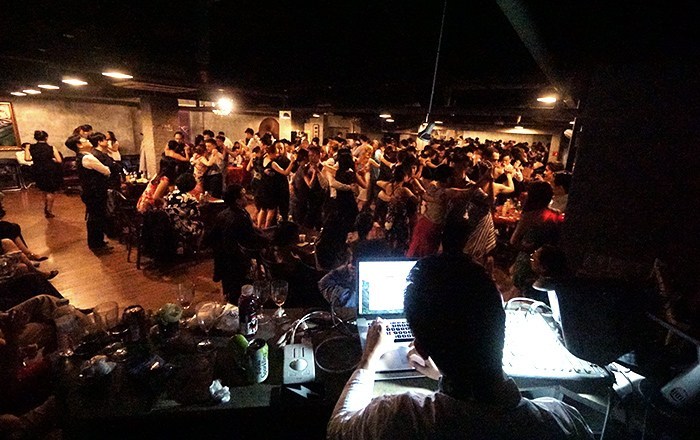I have a Korean friend who lives in San Francisco. He comes back to dance from time to time. Recently he came back again and visited many milongas. Before he left he said, “Tango in Seoul is no longer a community, it is a society.” What does he mean?
Tango here is growing so fast that we do not know how many people are dancing. Last year in Hongdae alone seven new venues opened, bringing the total to more than a dozen. All these venues have milongas, practicas, and classes all the time. How many dancers are dancing, and how many milonga organizers, DJs, and teachers are working?
Because there are so many milongas, it is not easy for foreign visitors to figure out where to go. Local dancers also do not know how many milongas there are and what each milonga is like. Every time you go to a milonga you will see some new faces you have not seen before, which makes you wonder where do all these people come from. Tango in Seoul feels like a society because it is difficult for an individual to comprehend directly how big the entire scene is.
The increase in dance population also causes tango workers to become more specialized. When the community was small, it was possible and even necessary for one person to be the teacher, DJ, and organizer all at the same time. As the number of dancers grows, the number of people who want to work in tango also grows. When there are more workers it becomes unnecessary and even difficult for one person to do all the jobs.
For example, when there are more tango teachers, there is also more intense competition among them to attract students. In order to compete, tango teachers need to put more time and effort in their teaching profession, so much so that they cannot afford to do other jobs. Buenos Aires has a very large dance population, many people want to teach tango there, so the competition among the teachers is very strong. It is hard to survive if you are not a professional, that is why Buenos Aires’ ratio of full-time tango teachers is high.
Now Seoul even has a full-time professional milonga organizer, who makes milongas at different venues on different days of the week using the same brand name. The brand attracts a steady group of followers. Naturally the competition among milongas is also intense, and that pushes the organizers to come up with more ideas to make a better product. This helps fuel the development of milonga culture in Seoul. At the end it is the dancers who benefit from this process.
This does not mean that all tango workers have to be full-time professionals. Rather this process of specialization is gradual, always there are professionals and amateurs working side by side. The professionals are not necessarily more important, and the amateurs are not necessarily less capable. The increase in dance population just gives the professionals more room to grow.
A Japanese friend worries that the great increase in milongas can be a negative development. If there are too many milongas dancers become divided. Although there are more places to choose from, none of it has the same number and quality of dancers as before. It does seem that recently in Seoul milonga attendance is in flux, and it is harder to find a milonga with a stable environment.
In the short term this negative effect does exist, and we have already seen this situation in happening in Seoul a few times. When a new place opens it takes away some of the people. But after a while the number always grows back and the milongas flourish even more than before. It is a cycle that keeps on repeating itself.
We have worked in tango here for 15 years. It is very exciting to see so many colleagues devoting their talent and passion to this place. They motivate us to keep going forward and keep getting better. The future of tango in Seoul is indeed very bright.
